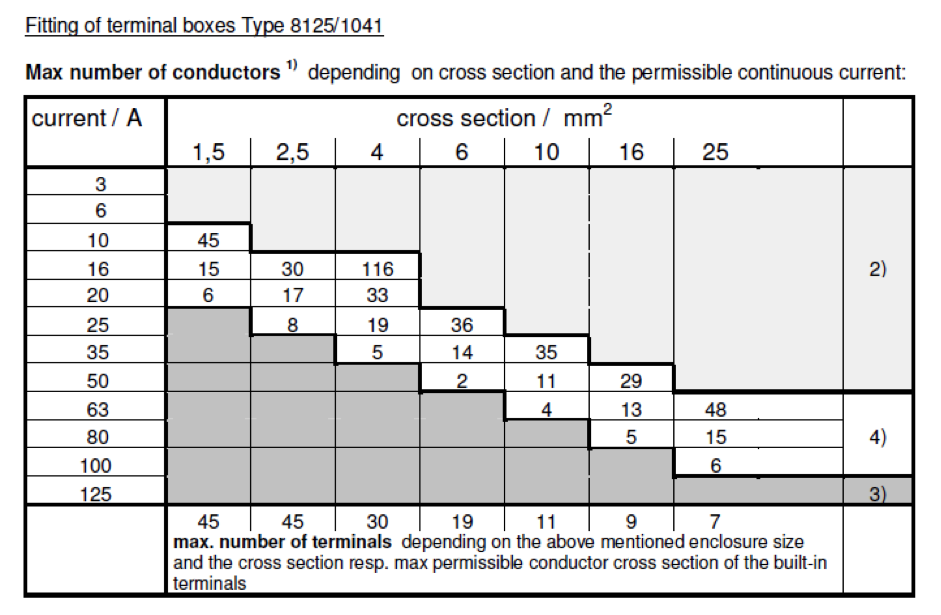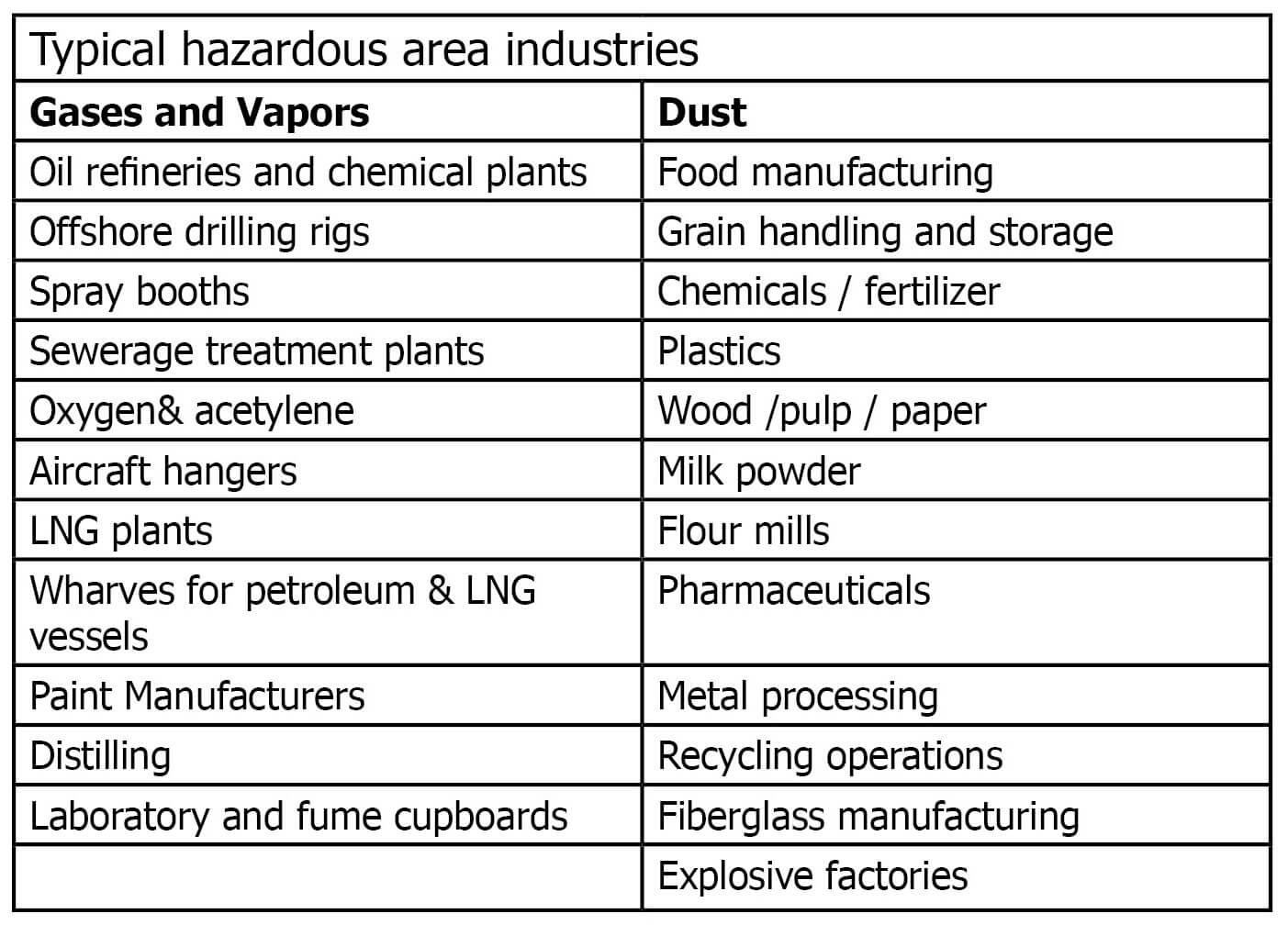What Does Roar Solutions Do?
What Does Roar Solutions Do?
Blog Article
The Basic Principles Of Roar Solutions
Table of ContentsSome Known Facts About Roar Solutions.Roar Solutions - The Facts8 Simple Techniques For Roar Solutions
In order to shield installments from a potential explosion an approach of evaluating and identifying a potentially unsafe location is needed. The function of this is to guarantee the right choice and installation of devices to ultimately stop a surge and to guarantee security of life.
(https://www.abnewswire.com/companyname/training.roarsolution.com.au_152691.html#detail-tab)
No equipment needs to be mounted where the surface temperature of the equipment is higher than the ignition temperature of the provided hazard. Below are some usual dust unsafe and their minimal ignition temperature. Coal Dust 380C 225C Polythene 420C (melts) Methyl Cellulose 420C 320C Starch 460C 435C Flour 490C 340C Sugar 490C 460C Grain Dirt 510C 300C Phenolic Resin 530C > 450C Aluminium 590C > 450C PVC 700C > 450C Soot 810C 570C The probability of the hazard being existing in a concentration high sufficient to create an ignition will certainly differ from location to area.
In order to identify this danger an installment is split right into areas of threat relying on the quantity of time the hazardous exists. These areas are described as Zones. For gases and vapours and dusts and fibers there are three areas. Zone 0 Zone 20 A dangerous environment is extremely likely to be present and may be existing for extended periods of time (> 1000 hours each year) and even continually Area 1 Zone 21 A dangerous ambience is feasible but not likely to be present for long durations of time (> 10 450 C [842 F] A category of T6 indicates the minimum ignition temperature level is > 85 C [185 F] Unsafe location electric devices maybe made for use in greater ambient temperatures. This would certainly showed on the ranking plate e.g. EExe II C T3 Ta + 60C( This indicates at 60C ambient T3 will certainly not be gone beyond) T1 T1, T2, T3, T4, T5, T6 T2 T2, T3, T4, T5, T6 T3 T3, T4, T5, T6 T4 T4, T5, T6 T5 T5, T6 T6 T6 A T Class rating of T1 suggests the optimum surface area temperature produced by the instrument at 40 C is 450 C. Presuming the associated T Class and Temperature rating for the devices are suitable for the location, you can constantly utilize an instrument with a more strict Division ranking than required for the location. There isn't a clear response to this concern unfortunately. It truly does rely on the kind of devices and what fixings require to be lugged out. Equipment with particular test treatments that can't be done in the field in order to achieve/maintain 3rd party score. Need to return to the manufacturing facility if it is prior to the devices's solution. Field Fixing By Authorised Worker: Complicated screening might not be required however certain treatments may need to be followed in order for the tools to maintain its 3rd celebration ranking. Authorised personnel must be used to carry out the job properly Fixing should be a like for like substitute. New element have to be taken into consideration as a direct replacement calling for no unique screening of the equipment after the repair is total. Each tool with an unsafe ranking should be assessed independently. These are detailed at a high degree listed below, however, for more comprehensive info, please refer straight to the guidelines.
Roar Solutions for Dummies
The tools register is a thorough data source of tools records that consists of a minimum set of fields to determine each product's location, technological specifications, Ex lover category, age, and ecological information. This info is critical for monitoring and managing the equipment effectively within hazardous areas. On the other hand, for routine or RBI tasting inspections, the quality will be a mix of In-depth and Close evaluations. The proportion of Detailed to Shut inspections will certainly be determined by the Tools Threat, which is evaluated based upon ignition danger (the probability of a source of ignition versus the probability of a flammable ambience )and the harmful location classification
( Zone 0, 1, or 2). This variation will certainly additionally affect the resourcing needs for job prep work. Once Great deals are defined, you can develop sampling plans based on the example size of each Lot, which describes the variety of random equipment products to be inspected. To determine the called for sample dimension, two elements need to be evaluated: the size of the Great deal and the classification of inspection, which suggests the level of initiative that need to be applied( lowered, regular, or enhanced )to the examination of the Whole lot. By incorporating the classification of evaluation with the Great deal dimension, you can then develop the proper denial criteria for a sample, meaning the permitted variety of faulty things discovered within that example. For more details on this process, please describe the Energy Institute Standards. The IEC 60079 typical suggests that the maximum interval in between inspections need to not exceed three years. EEHA examinations will certainly likewise be carried out beyond RBI campaigns as part of arranged maintenance and tools overhauls or repair work. These examinations can be credited towards the RBI example dimensions within the influenced Great deals. EEHA evaluations are performed to recognize faults in electrical devices. A heavy scoring system is essential, as a single piece of equipment may have multiple mistakes, each with differing levels of ignition threat. If the combined score of both inspections is much less than two times the fault rating, the Great deal is deemed acceptable. If the Whole lot is still thought about undesirable, it should undertake a complete examination or reason, which might trigger more stringent assessment procedures. Accepted Great deal: The reasons of any mistakes are recognized. If an usual failing mode is located, extra devices might need inspection and fixing. Mistakes are categorized by seriousness( Security, Integrity, House cleaning ), guaranteeing that immediate issues are assessed and attended to promptly to mitigate any impact on safety or procedures. The EEHA data source must track and tape the lifecycle of mistakes go to my blog in addition to the rehabilitative activities taken. Executing a robust Risk-Based Assessment( RBI )approach is critical for ensuring conformity and safety in taking care of Electric Equipment in Hazardous Locations( EEHA) (Roar Training Solutions). Automated Fault Scoring and Lifecycle Monitoring: Effortlessly manage mistakes and track their lifecycle to enhance assessment accuracy. The introduction of this assistance for risk-based assessment even more enhances Inspectivity's placement as a best-in-class remedy for governing compliance, along with for any asset-centric assessment usage situation. If you have an interest in discovering a lot more, we invite you to request a demo and find exactly how our option can change your EEHA monitoring procedures.
What Does Roar Solutions Mean?

In terms of explosive threat, a harmful area is an atmosphere in which an eruptive environment is existing (or may be expected to be existing) in quantities that call for unique precautions for the building, setup and usage of tools. hazardous area course. In this short article we discover the difficulties dealt with in the work environment, the threat control procedures, and the needed expertises to function safely
These substances can, in specific problems, create explosive ambiences and these can have major and heartbreaking repercussions. Most of us are acquainted with the fire triangular eliminate any kind of one of the three elements and the fire can not take place, yet what does this mean in the context of hazardous locations?
In a lot of circumstances, we can do little concerning the levels of oxygen airborne, however we can have considerable impact on sources of ignition, as an example electrical equipment. Hazardous areas are recorded on the harmful location classification illustration and are determined on-site by the triangular "EX LOVER" indicator. Here, amongst other essential details, areas are split into three types relying on the hazard, the chance and period that an explosive ambience will exist; Zone 0 or 20 is considered the most harmful and Zone 2 or 22 is considered the least.
Report this page